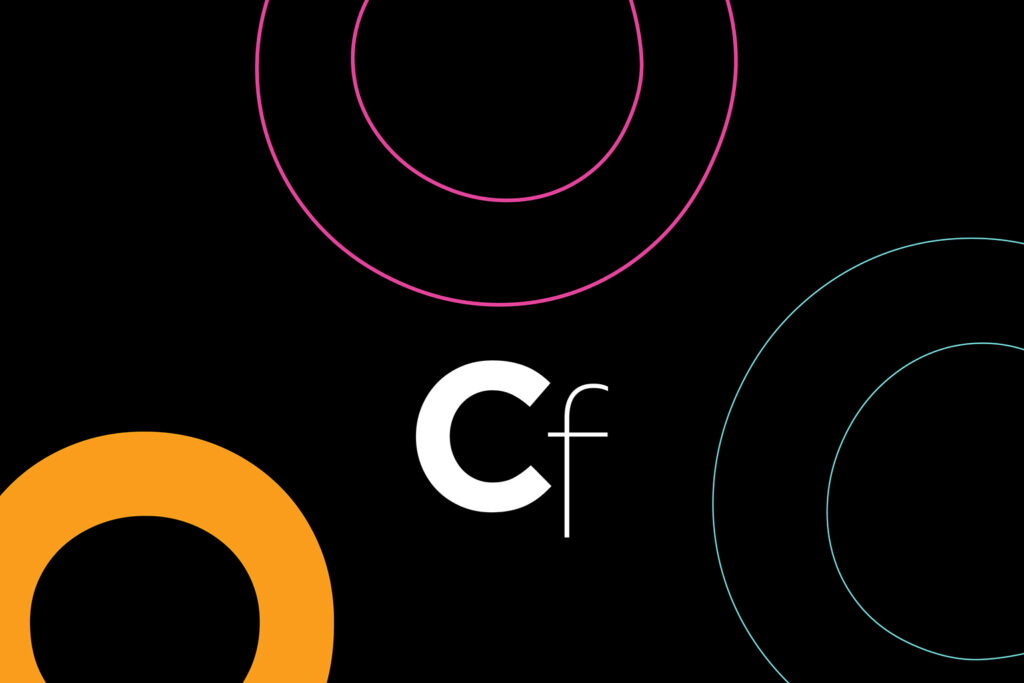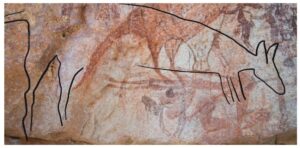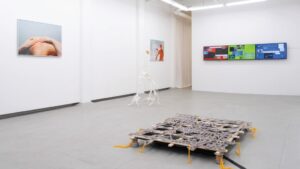Takashi Murakami Talks Painting, Process, and UFOs as He Opens Two Major Exhibitions

Art megastar Takashi Murakami looks exactly as he does in pictures: somehow animated and meditative at once. When we met, he wore a patched-up denim jacket over a puffer vest and highwater fatigue pants, a pair of round eyeglasses perched on his forehead like a halo. His long hair spilled over his shoulders, and as he spoke, he shut his eyes tightly and gestured with his hands—pointing, pinching, gripping the air as if sculpting his words into shape.
Earlier this month, Murakami opened his latest exhibition at Gagosian New York, “JAPONISME → Cognitive Revolution: Learning from Hiroshige,” which builds on a 2024 presentation at the Brooklyn Museum and continues Murakami’s exploration of historical replication as a method of understanding cultural inheritance. Later this month, a second show, “Stepping on the Tail of a Rainbow,” opens at the Cleveland Museum of Art. That one, too, began life elsewhere, at the Broad in Los Angeles in 2022, but has since grown to include new work and a monumental installation that reimagines a Japanese Buddhist temple.
Across both shows, Murakami turns the act of copying—looking backwards, in his view—into a kind of contemporary cartography. The past isn’t simply honored; it’s bent, warped, invaded by tiny floating UFOs. This, as it turns out, is what growth looks like for Murakami: part excavation, part mutation, and always, a reckoning with the long shadow of art history.
ARTnews spoke with Murakami ahead of the opening at Gagosian to discuss his process and coming to New York as a young artist.
ARTNews: You’ve said the Brooklyn Museum show started without a clear plan—that it was more about making something attractive in a short time. When did it become something deeper?
Takashi Murakami: At first, I thought of it as wallpaper—something visual, decorative. But I had avoided ukiyo-e [a genre of traditional Japanese art best known for its woodcut block prints] for much of my career, and this felt like a chance to confront that. I started copying Hiroshige’s 100 Famous Views of Edo just to see what would happen. But then I noticed: if you dig into these prints, you start to touch the roots of abstraction, even modern painting itself. That’s when I began looking at Impressionism too. The Gagosian show comes from that process—the results of that excavation.
What did that process look like, day to day?
It always starts a bit carelessly. I think, “Maybe I’ll try this.” But the bigger the canvas, the more you need to know. You can’t just rely on low-res images or books. You have to visit museums. Talk to curators. Pull high-resolution photos. And when you do that, you start to find things—surprises. That’s when you dive deeper. Eventually, the research and the paintings start to feed each other.
What surprised you most working on the Hiroshige series?
The context. Hiroshige made 100 Famous Views of Edo just after a massive earthquake, when the city was rebuilding. People needed hope. These images weren’t just scenic—they were helping people heal. I hadn’t realized that. And it made me think of my own 500 Arhats series after the 2011 earthquake in Japan. Suddenly, this old work felt very contemporary to me. That’s when the project took on new depth.
The Gagosian show also includes works based on French painters who were influenced by Japanese art. Why go there?
I wanted to follow Japonisme to its logical end. What happens when Western artists copy Japanese prints—and then a Japanese artist copies their copies? So I looked at Monet, [James McNeill] Whistler, Van Gogh. There’s something very humble in how Monet tried to absorb that influence. I was surprised by how sincere it felt. I could feel the admiration in his brushwork. So I copied those works in my own way—sometimes very closely, and sometimes with, you know, additions.
Additions like UFOs.
Yes. The UFOs are a kind of symbol. Not a joke, but a realization. They mark the moment of awareness, the moment of noticing something that was hidden in plain sight. For me, they’re a way of saying: “Look again.”
How does this connect with the Cleveland show?
That show originally came from the Broad’s collection. It was a fairly contained exhibition—mainly works they already owned, plus a few recent pieces I’d made during the pandemic. I wasn’t deeply involved in the concept at the time.
But when I visited the Cleveland Museum and saw how enormous the space was, I realized we had to do something more. So I expanded it into a kind of mini-retrospective, bringing in works from across my career. And because their atrium is so big—cathedral-scale—I asked Helen Jarvis, the production designer for the Shōgun series on [FX], if she’d help build a structure that could hold some of the paintings. She said yes. Now there’s a temple inside the museum. A real one, built specifically to house the work. A show within a show.
You also threw out the first pitch at a Dodgers game recently. How did that come about—and how did it go?
It was very stressful! I’m not an athlete at all, so I had to train hard just to make sure the pitch didn’t bouece. The first time I did it in Tokyo, the ball hit the ground before the plate, and the newspapers joked about it. So this time, I practiced every day. No curveballs, no tricks, just one clean pitch. When it landed in the catcher’s glove without bouncing, I was so relieved. It was a strange kind of performance art, maybe—but also very fun.
You posted on Instagram that Larry Gagosian liked those works. How did that feel?
It was emotional—deeply so. When I was installing the Gagosian show, Larry came by to check on the progress. I’ve known him for nearly twenty years. My English is still poor, and we often need a translator, but I always feel the weight of his reaction. This time, he singled out the Cézanne and Van Gogh pieces—the ones with the UFOs—and said he really loved them.
I posted a message afterward. I thanked him for his continued vitality, for showing up with energy and openness, even at 80. He’s not just a gallerist. He’s a living symbol of the New York art world. For him to connect with these paintings—my paintings, made through this long, circular process of influence and return—that was incredibly meaningful to me.
I called the exhibition my “life’s work before I die.” That wasn’t just performance. It feels true.
You said earlier that when you first came to New York as a young artist, it felt like you were “groping in the dark.” What did you mean?
When I arrived at 25, I thought contemporary art began with Duchamp—with the idea that not expressing anything was the expression. Then Warhol, minimalism, conceptualism. All of it felt totally disconnected from Japanese culture. From my culture. I didn’t see a way in. I didn’t know where to start. It felt like trying to invent a new language in a room where no one was listening.
But through these shows, I’ve started to realize that Japonisme was already part of the beginning. Japanese influence helped form modern painting. Maybe I wasn’t outside the story—I just hadn’t seen how the thread connected yet.
Now, I’m following it backwards. Repainting it. Rewiring it. That’s what these shows are: my attempt to grope toward clarity, and to make something honest with what I find along the way.
“JAPONISME → Cognitive Revolution: Learning from Hiroshige” is on view at Gagosian New York through July 11. “Stepping on the Tail of a Rainbow” opens at the Cleveland Museum of Art on May 25 and runs through September 7.





